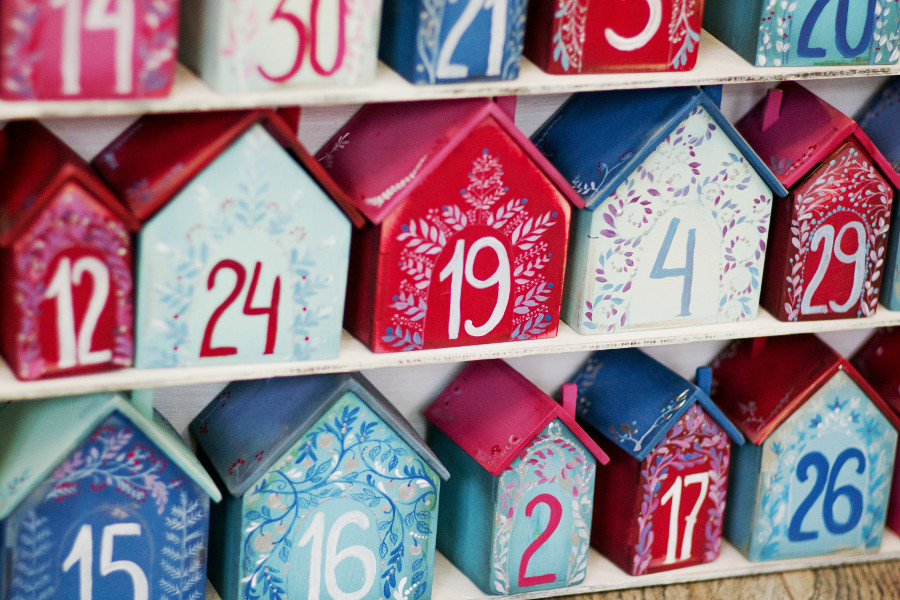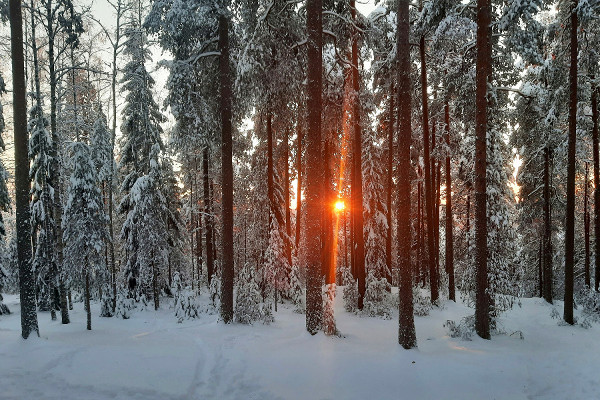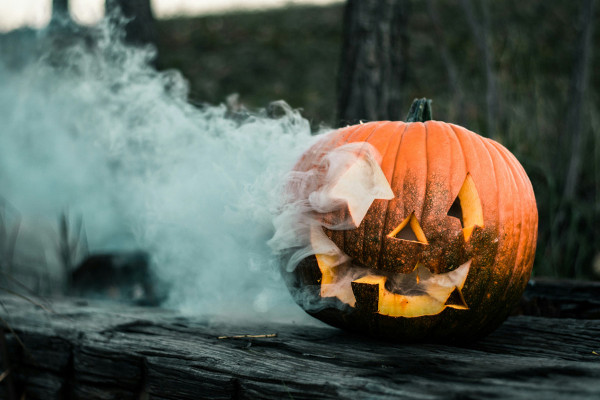Advent Season Traditions: How to Prepare for Christmas with Peace and Joy?
Advent is a season of preparing for Christmas. Spanning four weeks, it begins on the Sunday closest to November 30 and culminates on Christmas Eve. Advent offers a meaningful pause in the hustle of the holiday season, allowing us to reconnect with the true meaning of Christmas. For Christians it has another meaning where they look forward to celebrating Christ’s birth.

1. What is Advent?
Advent is a time of anticipation, excitement, and deep reflection. In some ways, it's about counting down the days until Christmas, especially for children. For a religious Christian person it’s about preparing yourself spiritually for the arrival of Christ. Beginning on the Sunday closest to November 30 and lasting for four weeks, Advent is a period when you start decorating your home one by one, begin your gift-shopping, make meal plans for the festive event and tidy up your home. This season is also a reminder to pause, take a breath, and reconnect with the meaning of Christmas, before the holiday rush takes over.
2. When does the Advent season begin and end?
Advent begins on the Sunday closest to November 30, St. Andrew’s Day, and lasts for four weeks, leading up to Christmas Eve. The exact start can vary from November 27 to December 3, depending on the year, but it always starts on a Sunday. Each week builds upon the last, symbolizing a deepening of the spiritual preparation for Christmas. It concludes on Christmas Eve, December 24, just in time for the celebration of Jesus’ birth. Advent marks the beginning of the Christian liturgical year, a time to prepare the heart for what’s to come. For non-religious people Advent is more about the start of the winter season and preparations for the end of the year festivities.
3. Why is Advent important?
Advent is important because it’s a season that helps us slow down, reflect, and prepare for Christmas. We often get swept up in the rush and materialism of the holiday season, but Advent invites us to pause and just enjoy the start of the Winter season. It’s a time to reflect on the hope, peace, joy, and love. Advent gives us the space to strengthen our connection with family and loved ones and it brings the joy to meet up with those loved ones again.
4. What do the four Sundays of Advent represent?
The four Sundays of Advent are like four steps in a journey towards Christmas. This tradition is deeply rooted in Christianity. The first Sunday represents hope, a reminder that in the midst of darkness, we look forward with anticipation to Christ’s light. The second is about peace, encouraging us to find inner peace through Christ. The third Sunday, known as Gaudete Sunday, is a celebration of joy, symbolized by the pink candle, marking a shift towards the joy of Christ's coming. Finally, the fourth Sunday represents love, reflecting the love Christ brought to the world. Each Sunday strengthens the anticipation of Christmas Day.
5. How do you make an Advent wreath?
Making an Advent wreath is a simple yet meaningful tradition. Start with a circular base, often made from fresh evergreen branches, representing eternity. You can add four candles, three purple and one pink, placed evenly around the wreath. The purple candles symbolize hope, peace, and love, while the pink one represents joy, lit on the third Sunday (Gaudete Sunday). You can also place a white candle in the center of the wreath, known as the Christ candle, to be lit on Christmas Eve or Christmas Day. In our modern times, advent wreaths usually have four candles with the same color, most popular being red. You can add winter themed decoration to the wreath like cones, cinnamon sticks, dried orange slices and wooden ornaments. Preparing an Advent wreath with the kids or just on your own is a fun and creative craft project. Once it's done the wreath can become a beautiful centerpiece on a table or a cupboard.
6. What is the significance of the Advent calendar?
The Advent calendar is much more than just a countdown to Christmas. It’s a way to immerse yourself in the season’s anticipation, drawing you closer to the meaning of Christmas with each passing day. Starting December 1, each window or door opens to reveal a chocolate praline or a small gift. For many people, it’s a family tradition to have an Advent calendar, more so if there are children around. Advent calendars have become heavily commercialized, and especially women are targeted by well-known brands, such as cosmetic companies, to buy their calendars containing product samples. These days it has also become popular to create your own calendar with the help of DIY craft kits. Then, it's up to you what you put into each box as a surprise gift for the days of the Advent to come.
7. What is the history of Advent?
Advent has ancient roots, but it wasn’t until the 4th century that it became officially recognized in the Christian church. Originally, it was a time of fasting and penance in preparation for the Feast of the Epiphany, celebrating the arrival of the Magi. By the 6th century, Advent shifted toward focusing on the anticipation of Christ’s birth at Christmas. The word “Advent” comes from the Latin adventus, meaning "coming." It’s evolved into a season marked by family, love, warmth and joy.
8. How do you celebrate Advent with children?
Celebrating Advent with children brings an extra dose of joy and meaning to the season. It’s about making the countdown to Christmas a warm family experience. Start with an Advent calendar to create daily excitement. Opening a new window or box in the Advent calendar gets kids excited and fills them with anticipation of what to find there. It's usually a small piece of chocolate or unexpensive toy. This is also the period when you can craft ornaments and Christmas decorations, bake cookies together and learn Christmas carols that you can sing together. Another tradition is to light the Advent candles each Sunday. This can be done by having the children taking turns on who lights the current week's candle. If you have any interesting or heartfelt family stories related to Advent and Christmas, this is a good time to share them with your children, so one day they can continue with the family traditions for the next generations to come.
9. What is the connection between Christmas Fairs and Advent?
Christmas fairs and Advent are closely intertwined, as these events typically take place during the Advent season and reflect its festive spirit. Christmas fairs are not just about shopping, but about gathering together to celebrate the season. They often feature local crafts, delicious treats, and live entertainment, creating a sense of community and joy. Christmas fairs bring people together, offering a tangible way to spread joy, generosity, and love in the festive season. Many European cities have world famous Christmas fairs, visiting them has evolved into a special branch of themed travels. Don't miss out on them if you get the opportunity.
10. What are some Advent traditions from around the world?
Advent traditions vary widely across the globe, but they all share a common thread of anticipation and celebration. In Germany, the Advent calendar is a beloved tradition, often filled with chocolates or small toys. In Mexico, the nine days of Las Posadas reenact Mary and Joseph’s search for shelter. In Sweden, St. Lucia’s Day on December 13 marks the start of Advent with processions and candle-lit ceremonies. In Italy, the tradition of Advent dinners brings families together for festive meals. These global traditions showcase how Advent is observed through unique customs, while uniting people in spiritual preparation for Christmas.
11. What should you do during Advent to prepare for Christmas?
Advent isn't just a countdown, but an opportunity to slow down. Consider acts of kindness, service, or charity to help those in need. Unfortunately, over the years Christmas has turned into a stress-inducing event requiring a number of activities, including a lot of house chores. To lessen the heavy load on your shoulders, create an action plan with dates: what to do when, and how to involve other people's help in it. The main tasks include the following: gift-shopping, decorating your home, buying and decorating a tree, putting together and preparing the festive menu, baking cookies and sweet treats, tidying up the home, spending time with loved ones, and not to forget, having some me-time with self-reflection and self-care.
Enjoy this time of the year with your loved ones. If the weather favours you and there is snow, use every opportunity to take advantage of it: build a snow man, have a snow ball fight, go sledding to a nearby hill. Don't forget to taste the season's culinary treats like hot mulled wine, roasted chestnut and a pot of warm, nutrient-dense dish.



